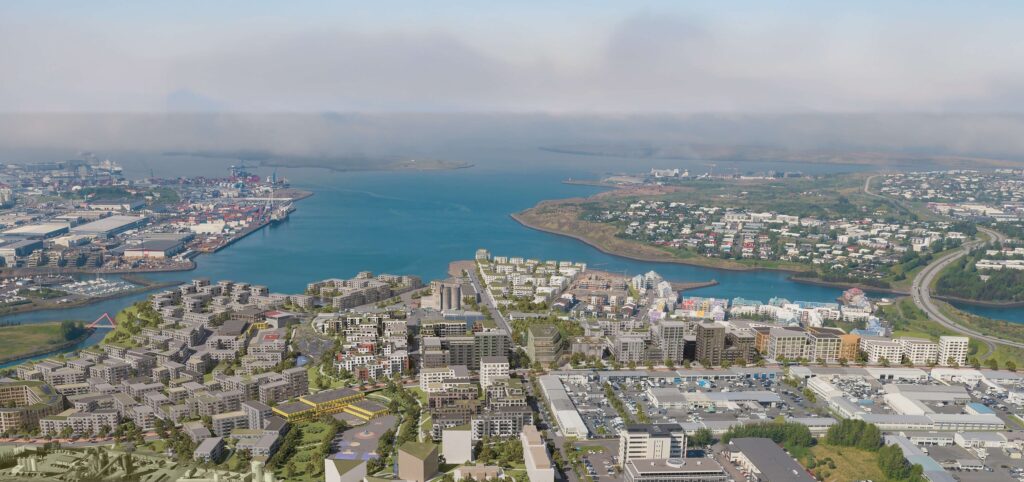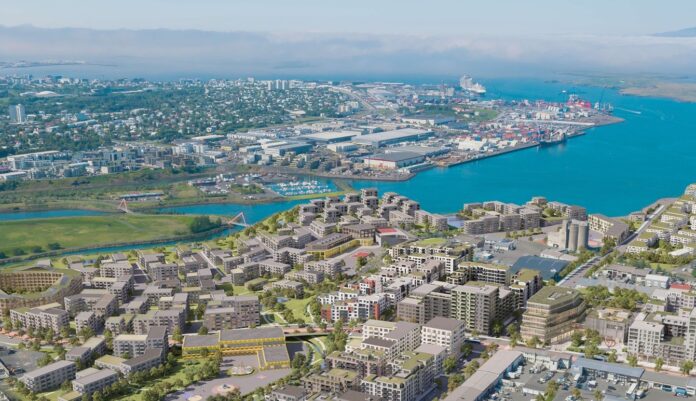The real estate development company Klasi has launched a website showing the scale of development in the Ártúnshöfði–Elliðaárvogur area, a district planned for 8,000 homes on land that formerly housed an industrial zone.
The new urban quarter is bounded by Vesturlandsvegur, Höfðabakki, and the shoreline of Grafarvogur and Elliðaárvogur, and is expected to accommodate around 20,000 residents at full build-out.
Krossamýrartorg will be the heart of the district, featuring a cultural and community hub, varied retail, restaurants, fitness, leisure and services, plus office space—the aim being to make the square a new focal point for Reykjavík’s eastern districts.
“Where there was once industry, a vibrant urban environment with diverse housing, services and green spaces will emerge in the coming years. Elliðaárvogur offers attractive outdoor amenities, broad views and proximity to the sea, and from Höfðinn there are expansive vistas,” the announcement says.
Under the detailed local plan, at least two integrated preschool–primary schools and a magnet school for older primary pupils are envisaged. The schools are arranged along a green pedestrian axis that winds through the neighborhood, with rest areas and playgrounds along the way.

The first phase of the Borgarlína rapid transit system will also run across the district from 2031, with Krossamýrartorg serving as an interchange for three Borgarlína routes linking the area to other parts of the city.
Klasi began acquiring properties in Ártúnshöfði more than 20 years ago, and in 2017 the City of Reykjavík issued a framework plan for the area that laid the groundwork for a new urban pattern and land use.
Thereafter, Klasi, ASK Architects, and others worked with the City of Reykjavík on a detailed local plan for the first development area, which entered into force in 2022. Klasi is now proceeding with development alongside other project partners, many of whom have purchased plots from Klasi.
The company notes that the images depict only the planning layout of the district, not the design of individual buildings. A website has nevertheless gone live where the public can follow how Elliðaárvogur and Ártúnshöfði take shape in the coming years.
Source: Vb.is




